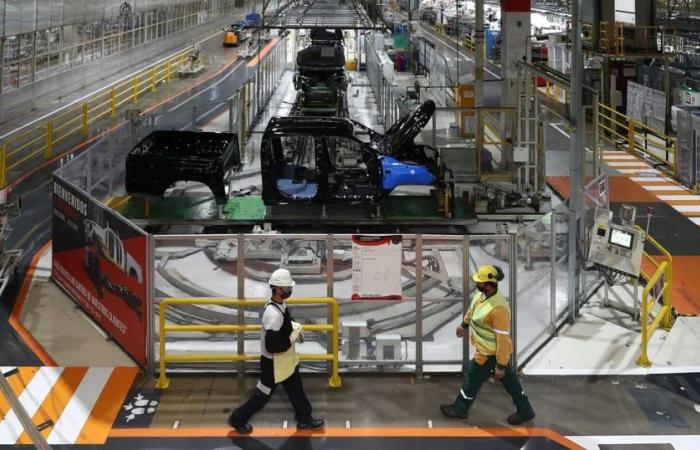This avalanche of change falls on most industries, and in each one it takes a different form. Both in Energy, Mining, Technology, Media, Pharma, Mass Consumption, Retail, Automotive, Manufacturing in General. Rapidly increase or reduce production, logistics and infrastructure issues, new ways of consuming, imports and competition from abroad, decreased demand, price pressures with increasing costs, need to export, new regulations, union issues. Added to this are the usual things that are part of the accelerated evolution of management: new technologies, applying artificial intelligence, new technological players, talent shortages.
No Board of Directors or CEO is exempt from perceiving that this year is particularly dramatic in terms of the new scenario that must be led, in particular, given that the most important driving force is the Government. We must be aware that we are not in a moment complex, but the changes will endure, therefore you have to transform to develop and succeed in a new scenario.
What I find most in my conversations with top managers is the frustration that they know that they have to change, they even know what needs to be changed, but the slowness and lack of results is overwhelming and frustrating, since it generates the feeling that we don’t know how to achieve it.
We must be aware that it is not that we are in a complex moment, but that the changes are going to last, therefore we must transform ourselves to function and succeed in a new scenario.
For them are these ideas that I have seen work in many cases. I dedicate the last one to the shareholders and board of directors:
- If the idea of change exists but has not taken concrete form, it is advisable to do a formal strategic plan, even if it is internal, that puts numbers to what is believed to happen, and that generates concrete actions to confront them. Never more necessary than in this context to formalize what is anticipated and how we want to confront it.
- The actions should not be like “the measures” that ineffective governments take, where the what is said, but not the who, nor the when, nor the how, nor how the execution will be monitored. And they result in a “never.” It is much more effective define projects that specify the above, with a description that includes the above.
- It must be recognized that many of those who accompany the CEO on his team are not prepared, motivated or trained to face these changes. Getting to a position by executing the routine with quality (even if it is complex) is not the same as transforming reality. Being a transformer requires different qualities.
- Many of the transformations are based on the use of technological tools. And, in general, it is the younger, more disruptive, more “techie” people who are going to feel more comfortable learning new things and re-thinking the way of doing things, in a faster and more innovative way. Therefore, part of the strategic plan is the empowerment of transformative people with these characteristics, but empowerment in the true sense of the word, that they have the power to do. Many times I hear their frustration because they feel they are getting entangled in the intricacies of bureaucracy. These same disruptive people only remain in an environment that, in addition to allowing them to create, listens to them, develops them, and gives them freedom. They have no tolerance for top-down, conservative and slow cultures. You have to create an environment that facilitates change.
- With the variety of changes, situations, tools, technologies, it is impossible for one or five people to be clear about all the possible aspects to face and resolve. Transformation requires adding heads, interests, knowledge, ideas and arms. A large part of the organization has to be aligned and contribute enthusiastically to the process, and everyone has to make their contribution. This means the need for find forms of participatory workseriously, not nominal.
- The previous points imply a new culture of work, which is generally not present. If so, the beginning of everything is to develop it. Without big words or difficult to understand. With the clear definition of behavioral principles accepted and required of people, without which the company will not be able to advance and which therefore become essential for all collaborators. Not because he is nice or to win a prize or appear in a ranking, but to work together on a shared vision, face the market, be able to attract and keep the best people and succeed in a complex market. This should be done in months, not years.
- In the meantime, there may be emergency projects to eliminate some of the major obstacles faced, or reduce superfluous costs. Small project teams can be assigned to critical areas with the mission of identifying short-term improvements that sometimes only require finding them and a decision to attack them. It is amazing the results that this can generate in a short period of time (a couple of months at most).
- As all of this requires talents that may not yet be available, be aware and try to identify people in the organization who can assume roles and who are “covered” or incorporate talent from outside that will generate a dynamic mix. For which you have to work quickly on the employer brand.
- If the reader is a CEO, and the Board of Directors does not accompany him, a way must be found, usually with the help of a third party, to transmit his vision upwards. And if his team reporting to him does not support him, he must find a way for the entire team to be aligned, helping them achieve this, with these people or others.
- This is for the shareholders and members of the directory: get closely involved in this process, Pay attention to how all this is working in the company, not just the results. Make sure you provide the necessary resources, evaluate whether the managers are the ones you need, and make the organizational changes that generate the appropriate context. Many business failures are due to Boards of Directors that stay away or do not make difficult decisions, often to avoid conflict.
In this year of unprecedented change, only those who know how to adapt and transform will be able to survive or prosper in the new business scenario. Let’s get to work, the year goes by very quickly.
The author is a Founding Partner at Backer & Partners and a consultant specialized in searches for senior executives and cultural transformation of organizations and a neuroleadership coach.






